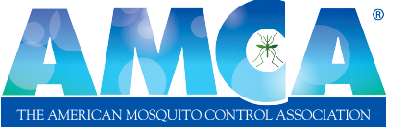A Field Efficacy Evaluation of In2Care Mosquito Traps in Comparison with Routine Integrated Vector Management at Reducing Aedes aegypti
ABSTRACT
Aedes aegypti is the predominant vector of dengue, chikungunya, and Zika viruses. This mosquito is difficult to control with conventional methods due to its container-inhabiting behavior and resistance to insecticides. Autodissemination of pyriproxyfen (PPF), a potent larvicide, has shown promise as an additional tool to control Aedes species in small-scale field trials. However, few large-scale field evaluations have been conducted. We undertook a 6-month-long large-scale field study to compare the effectiveness and operational feasibility of using In2Care Mosquito Traps (In2Care Traps, commercially available Aedes traps with PPF and Beauveria bassiana) compared to an integrated vector management (IVM) strategy consisting of source reduction, larviciding, and adulticiding for controlling Ae. aegypti eggs, larvae, and adults. We found that while the difference between treatments was only statistically significant for eggs and larvae (P < 0.05 for eggs and larvae and P > 0.05 for adults), the use of In2Care Traps alone resulted in 60%, 57%, and 57% fewer eggs, larvae, and adults, respectively, collected from that site compared to the IVM site. However, In2Care Trap deployment and maintenance were more time consuming and labor intensive than the IVM strategy. Thus, using In2Care Traps alone as a control method for large areas (e.g., >20 ha) may be less practical for control programs with the capacity to conduct ground and aerial larviciding and adulticiding. Based on our study results, we conclude that In2Care Traps are effective at suppressing Ae. aegypti and have the most potential for use in areas without sophisticated control programs and within IVM programs to target hotspots with high population levels and/or risk of Aedes-borne pathogen transmission.

Maps of the integrated vector management (IVM) and In2Care Mosquito Trap (In2Care Trap) sites. (A) IVM and In2Care Trap sites in relation to each other; (B) Close-up of IVM site showing placement of BG-Sentinel 2 (BGS2) traps and little black jars (LBJ); (C) Close-up of In2Care Trap site showing placement of BGS2 traps, LBJ, and In2Care Traps. Source of map background imagery: ESRI, DigitalGlobe, GeoEye, Earthstar Geographics, CNES/Airbus DS USDA, USGS, AeroGRID, IGN, and the GIS User Community.

Aedes aegypti weekly mean density in the In2Care Mosquito Trap (In2Care Trap) and integrated vector management (IVM) sites. (A) Mosquito eggs collected in little black jars (LBJ); (B) Mosquito larvae collected in LBJ; (C) Mosquito adults collected in BG-Sentinel 2 traps. Square-root-transformed weekly least squares (LS) means are shown. Asterisk indicates weeks when LS means significantly differed between sites. The timing of aerial and ground ultra-low-volume adulticide applications in the IVM site is indicated by the black truck or helicopter symbol, respectively. The timing of In2Care Trap deployment is indicated by the black In2Care Trap symbol, and the timing of In2Care Trap maintenance in the In2Care Trap site is indicated by the black In2Care Trap floater symbol. (D) Trial timeline.
Contributor Notes
Florida Medical Entomology Laboratory, Department of Entomology and Nematology, Institute of Food and Agricultural Sciences, University of Florida, 200 9th Street SE, Vero Beach, FL 32962.
ADAPCO, 550 Aero Lane, Sanford, FL 32771.
Manatee County Mosquito Control District, 2317 2nd Avenue W, Palmetto, FL 34221.
Lee County Mosquito Control District, 15191 Homestead Road, Lehigh Acres, FL 33971.
Lacerta Therapeutics, 14189 NW 129th Way, Alachua, FL 32615.
